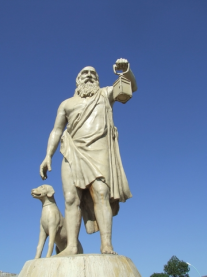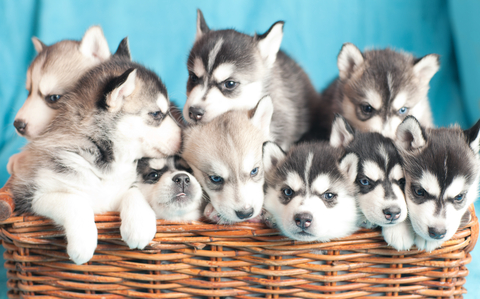Dogs have made their mark in a number of subjects, from the Shakespearean stage to Animal-Computer Interaction.
Dogs in History and The Arts
-
Cynicism: Philosophy for dogs?
Read now to access more details of Cynicism: Philosophy for dogs?Where being truly human means living like a dog.

Article
Level: 1 Introductory
-
Do dogs want to go to heaven?
Read now to access more details of Do dogs want to go to heaven?Have you ever wondered what happens to our pets when they die?

Article
Level: 1 Introductory
-
The Dog of Alcibiades
Read now to access more details of The Dog of AlcibiadesGetting people to gossip about your dog can be a useful way of distracting them from talking about you!

Article
Level: 1 Introductory
-
English monsters
Read now to access more details of English monstersDr Tim Hammond takes a look at dogs and the poor on the English Renaissance stage, particularly in Shakespeare's history plays.

Article
Level: 1 Introductory
Dogs in Science
-
Dogs under the microscope
Read now to access more details of Dogs under the microscopeDr Mark Hirst delves into Dog DNA to explain where they came from and why there are so many different types.

Article
Level: 1 Introductory
-
The selective breeding of dogs
Read now to access more details of The selective breeding of dogsHow does the selective breeding of dogs work? Why are poodles and German Shepherds different? What about designer dogs? This science article explores.

Article
Level: 1 Introductory
Dogs in Technology
-
Animal-Computer Interaction and dogs
Watch now to access more details of Animal-Computer Interaction and dogsDr Clara Mancini tells us how Animal-Computer Interaction (ACI) is expanding the design of interactive systems beyond the human species.

Video
Level: 1 Introductory
-
Designing interactive systems for dogs
Read now to access more details of Designing interactive systems for dogsWhy is designing interactive systems from a user-centred perspective so important for professional dogs?

Article
Level: 1 Introductory
Like this? Try a FREE course
-
Living psychology: animal minds
Learn more to access more details of Living psychology: animal mindsDoes your pet cat or dog experience emotions the same way you do? Can non-human animals solve complex problems? To what extent do other species have minds that are like human minds? This free course, Living psychology: animal minds, explores these, and other, issues in the psychology of animal minds. Studying animal minds is of great importance ...

-
What do genes do?
Learn more to access more details of What do genes do?This free course, What do genes do?, explores how information contained in DNA is used, explaining the flow of information from DNA to RNA to protein. Also introduced are the concepts of transcription (as occurs between DNA and RNA) and translation.

-
Introducing mammals
Learn more to access more details of Introducing mammalsMammals come in a bewildering variety of shapes and sizes, and yet all species have some characteristics in common. These similarities justify the inclusion of all such diverse types within the single taxonomic group (or class) called the Mammalia. This free course, Introducing mammals, offers a starting point for the study of mammals. It will ...


Rate and Review
Rate this article
Review this article
Log into OpenLearn to leave reviews and join in the conversation.
Article reviews